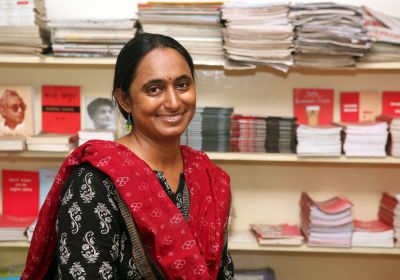
About 500 members of the Indian community and supporters held a protest in solidarity with Indian farmers on February 21, reports Susan Price.

About 500 members of the Indian community and supporters held a protest in solidarity with Indian farmers on February 21, reports Susan Price.

The Indian community organised a rally to show support for farmers protesting against the Indian government's attempts to privatise and corporatise the agricultural sector, reports Jacob Andrewartha.

Green Left's Alex Bainbridge interviewed Aamer Manzoor from the Kashmiri community about solidarity with Kashmir one year after the Indian regime's brutal crackdown and suspension of formal autonomy there.

The Indian left is facing tough challenges following the reelection of Narendra Modi's Bharatiya Janata Party (BJP) government.

Elections in India will take place from April 11 to May 23. Green Left Weekly’s Susan Price spoke to Kavita Krishnan, a member of the politburo of the Communist Party of India (Marxist-Leninist) Liberation (CPI-ML) about their campaign to challenge Narendra Modi’s far-right Bharatiya Janata Party (BJP) government.

Up to 20,000 Indian students and their supporters from around the country took to the streets of Delhi on February 7 to protest the Modi government’s attacks on students and universities, and to demand the right to education and employment.

A sea of red swept the Indian state of Maharastra as tens of thousands of farmers joined the Long March to demand agrarian reform, with protesters reaching Mumbai, India’s financial capital. In response, Prime Minister Narendra Modi’s government has agreed to resolve the farmers' issues within six months.

Ahead of the crucial Gujarat elections, the chinks in the propaganda armour of Indian Prime Minister Narendra Modi’s Gujarat model of development continue to get brutally exposed. Indeed, the popular narrative on development that has emerged from within Gujarat – where Modi was chief minister prior to becoming PM – and that has taken social media by storm is that “vikas gando thayo chhe” – “development has gone crazy”.

The rise to power of India’s prime minister, Narendra Modi, has been built on a paradigm of development and anti-corruption that has enabled him to develop sustained electoral support among the Indian middle classes and rehabilitate his image as a statesman on the international stage.
But the neoliberal model of development that Modi represents is one that comes at great cost in terms of economic inequality and basic civil rights.

The rise to power of India’s prime minister, Narendra Modi, has been built on a paradigm of development and anti-corruption that has enabled him to develop sustained electoral support among the Indian middle classes and rehabilitate his image as a statesman on the international stage.
But the neoliberal model of development that Modi represents is one that comes at great cost in terms of economic inequality and basic civil rights.